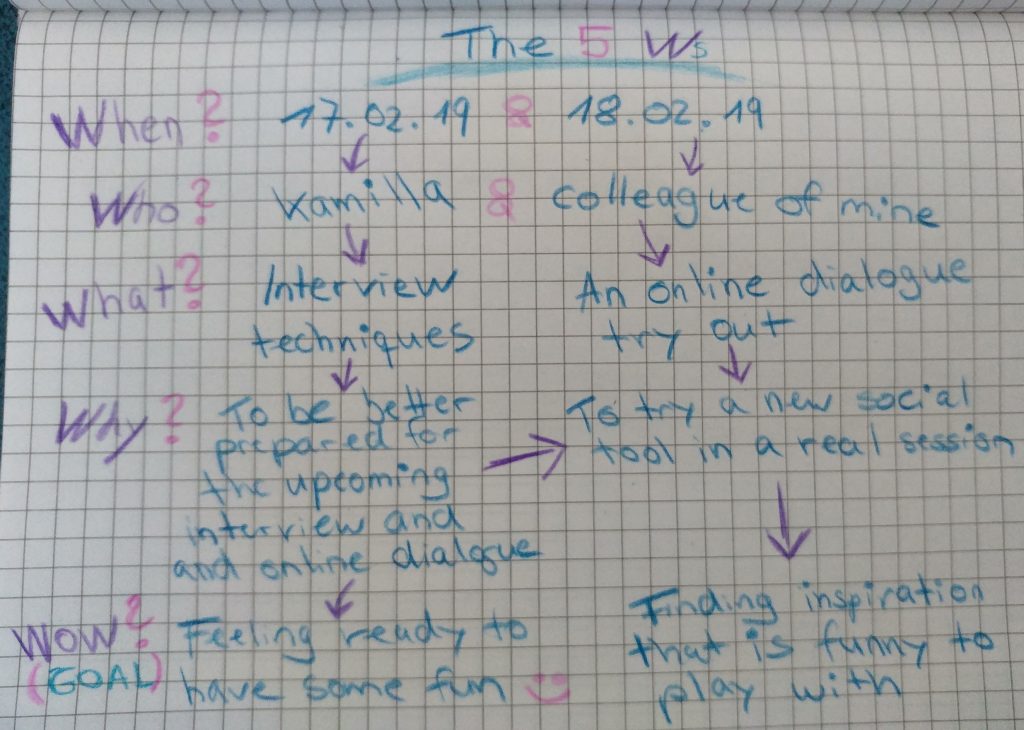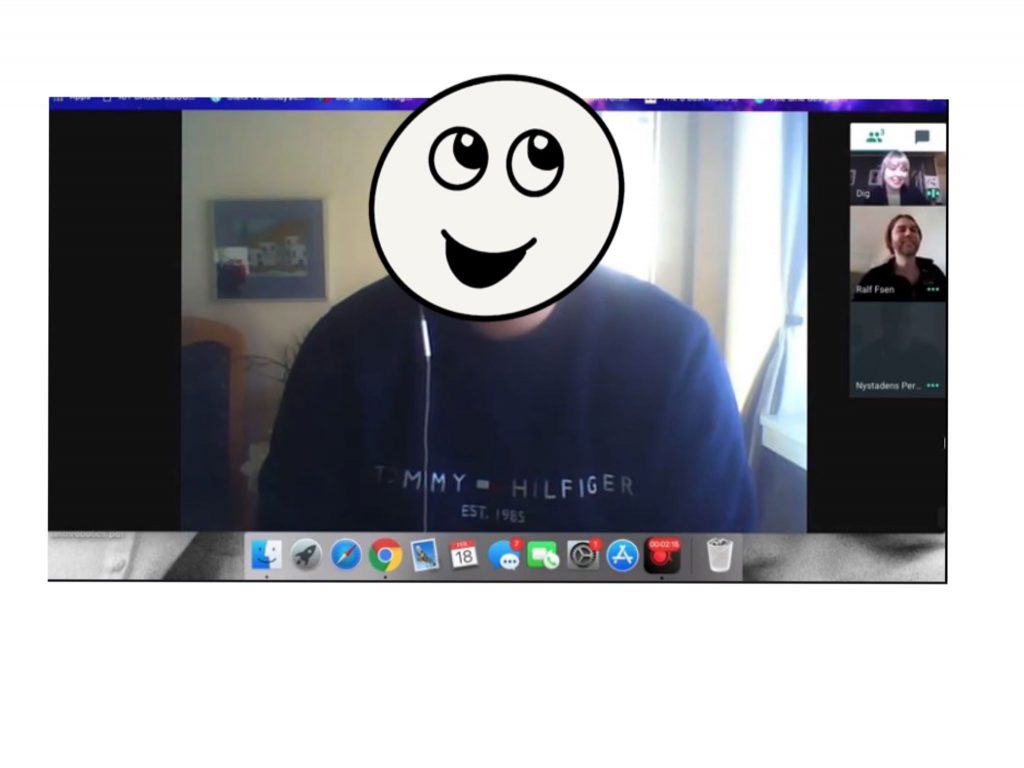The Do One part
To begin with, I would like to introduce myself as an experienced teacher when standing in front of children and grownups, and I never really thought about how I will perform in a real online dialogue as a host or teacher. So while getting through all the parts of the module I was failing forward in a really nice and playful way together with my study fellow Kamilla who I decided to cooperate with. And this is my and (mostly) our journey to a nice performance…
The journey started for me with the reflection work in the See One part to find out what’s really important for me when thinking about online dialogues as a student: things like good sound and video quality, a well prepared and experienced host (teacher), nice physical settings without optical clutter and, most important for me, the awareness of any physical disruptions like attacking cats (Kamillas cat has been angry sometimes when we had our online dialogue exercises).
So when I started my personal training in preparing an online dialogue I worked with my technical settings and my surroundings at home. I did some tests with my laptop and my android tablet to find out which one I thought is performing the best sound and video quality and I also established a new workspace (I have to say that it became really uncomfortable to replace my loved Chesterfield with a chair) and so on. It then came to the funny part when Kamilla and I did some more formal dry tests and tried to find out the best physical settings for our online dialogue and what kind of technology will work best for an audience (surprise, it was my android tablet and her MacBook Pro).
We then had a lot of fun with failing forward while playing around with our settings and how we performed on the screen, but we also found out how intense it becomes to be concentrated and focused on the screen that much. This was very helpful to get in touch with personal limitations (it’s still very hard for me to stay focused while being the host or teacher).
The Teach One part
From that point, we started with the design of what we call phase 1 – getting prepared for our online dialogue. At this part I remembered how to prepare physical lessons in school so we tried to combine it with the scripting template and transform it into a phrase that can be remembered very easy:
When-Who-What-Why-Wow + How (that belongs to the method and the setting)
We then taught each other in interview techniques and mostly all the performing skills we learned so far from the module. We decided that this was a pretty nice possibility for us to play with the online dialogue while combining it to another task, Preparing an Online Interview and our real teaching session about Google Hangout as a social tool for communication.
The REAL test
Fortunately a colleague of mine was interested in being taught how to use Google Hangout and the Google Calendar (he had no experience with it so far). We then had a nice online session with the topics The functions of Google Hangout and How to use the calendar to create online meetings. For the method part we used the 5 Ws and the How (you can see a simple example of the 5 Ws below). This worked pretty well for us, especially as structure when we planned the online session and afterward in the debriefing part when used it to analyze the lesson.


How did it go?
Well, we think we did a job good job 😊 First at all we were clever enough to find a topic that isn’t too difficult to deal with (we could have chosen something like The social-economic consequences of the industrial revolution in Louisiana in the early 1830s…). On the other hand we focused so much on the dialogue when we prepared the session. So instead of just telling something about something planned to use the shared screen technique and having a dialogue about the functions of Google Hangout and how to use the calendar in multiple ways. This was really a nice way to get an interesting dialogue about all the features and a pretty good way to reach our goals – The Wow. So when we had the dialogue my colleague had several wow experiences like saying “Cool, I can use that for…” or “I can imagine it for having conferences with…” and so on.
Later on in our debriefing Kamilla and I agreed that this was a nice and uncomplicated session well knowing that teaching a bigger group and facing disruptions and weird things will need much more training and experience. So this would be a fantastic opportunity if that could be trained in the Playful Online Dialogue module 😉
My best advice
Try to fail forward (play) a lot and have fun with friends or colleagues while doing some exercises. Dewing it that way you probably will get experienced in performing more relaxed when you are on air and feeling more comfortable when things are getting weird. This is what I call to build up some powerful soft skills…
